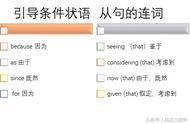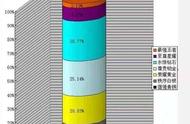1、定义:在句中用来说明主句原因的句子叫原因状语从句。
2、常用引导词: because (因为), as (由于), since (既然), now (that) (既然)
3、时态:原因状语从句一般都是根据实际情况选用适当的时态。通常是主过从过,主现从现。
4、because, since和as的区别:
1) because引导的原因状语从句一般放于主句的后面,because从句位于句首时要用逗号分开,放在句末时,可不用逗号分开。because表示直接原因, 语气最强, 最适合回答why引导的疑问句。because of 也表示原因,但它后面不接从句, 只能接名词, 代词或动名词。注意:because 和so 不可同时出现在一个句子里。
① I do it because I like it. = I like it so I do it.
② We went by bus because it was cheaper. = It was cheaper so we went by bus.
③ He can’t go to school because of his illness.
2) since引导的原因状语从句一般放于主句之前表示已知的、 显然的理由(通常被翻译成“既然”= now that ), 较为正式, 语气比because弱。
① Since you are free today, you had better help me with my mathematics.
② Since you don't trust him, you should not employ him.
③ Now (that) you are grown up, you should not rely on your parents.
3) as 引导原因状语从句时表示附带说明的“双方已知的原因”,含有对比说明的意味, 语气比since弱, 较为正式, 位置较为灵活(常放于主句之前)。
① As it is raining, you’d better take a taxi.
② As you are tired, you had better rest.
③ I went to bed early, as I was exhausted.
4) for引导的是并列句表示原因但并不说明主句行为发生的直接原因, 只提供一些辅助性的补充说明, for引导的并列句只能放于主句之后并且必须用逗号将其与主句隔开。
① He could not have seen me, for I was not there.
② He seldom goes out now, for he is very old.














